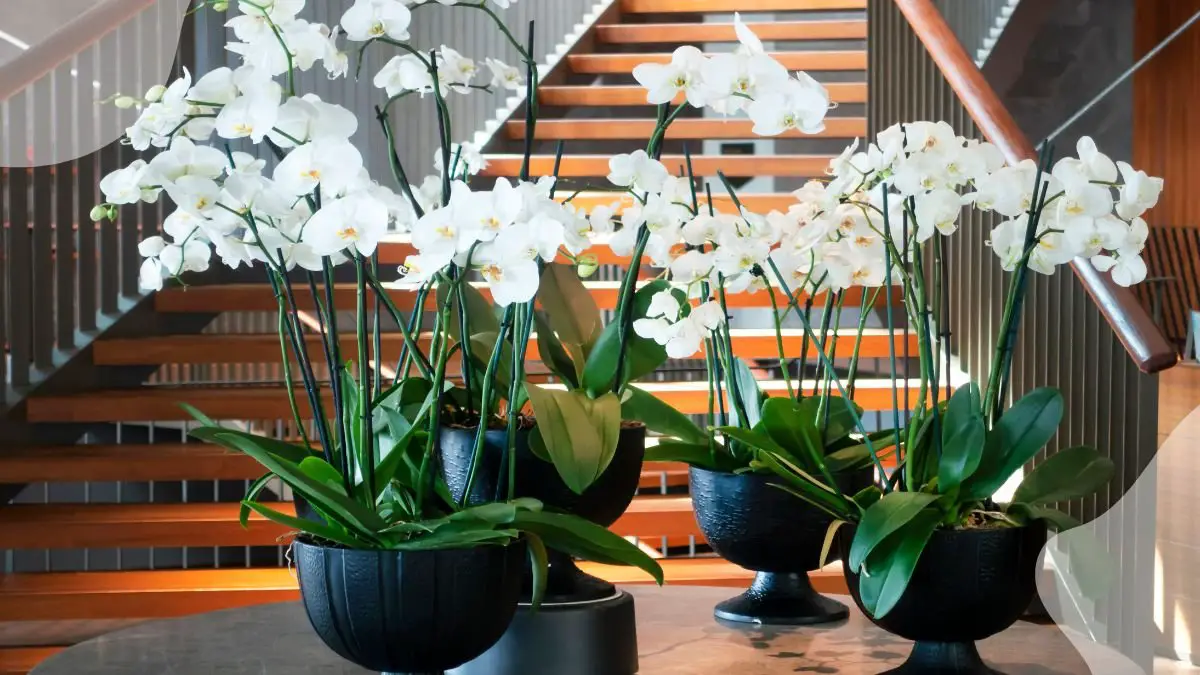Discovering the delicate balance between too much and too little watering for your indoor orchids is crucial for their health. Orchids, renowned for their beauty, require a specific watering routine to thrive indoors. Overwatering can lead to root rot, while underwatering can cause wilting and stunted growth. Finding the sweet spot in how often to water your orchids indoors is essential for their well-being and longevity. Understanding the signs of when your orchids need water versus when they don't is key to maintaining their vibrancy and beauty.
Key Takeaways
- Consistency is Key: Establish a regular watering schedule for your orchids based on their specific needs and environmental conditions.
- Drainage Matters: Ensure proper drainage for orchids by using pots with drainage holes to prevent waterlogging and root rot.
- Choose Wisely: Select the right orchid medium that promotes proper drainage and aeration to maintain healthy root systems.
- Quality Water is Crucial: Use distilled, rainwater, or filtered water to avoid mineral buildup that can harm orchids over time.
- Monitor and Adjust: Keep an eye on your orchids for signs of overwatering or underwatering, and adjust your watering routine accordingly.
- Act Promptly: Address any watering issues promptly to prevent long-term damage and maintain the overall health of your orchids.
Understanding Orchid Watering Basics
Watering Frequency
Adjust watering based on light, temperature, and humidity. Look for crinkled leaves as a sign of thirst. Orchids can go without water for 3-4 weeks.
Proper Techniques
k orchids when moss dries out. Apply water to moss every 7-10 days. Consider seasonal adjustments for watering.
Optimal Drainage
- Use pots with drainage holes.
- Separate decorative cache pots for watering.
- Ensure excess water drains freely.
Ideal Humidity
Maintain proper humidity levels. Adjust watering with humidity changes. Monitor to avoid over or under-watering.
Watering Orchids Without Drainage Holes
Prevent Root Rot
- Avoid overwatering to prevent root rot as it can lead to the decay of roots.
- Ensure proper drainage by using a well-draining orchid mix to keep roots healthy.
- Regularly check roots for any signs of rot such as mushy texture or dark coloration.
Orchid Mix Importance
- When watering orchids without drainage holes, choose a suitable orchid mix that promotes optimal growth.
- Opt for a mix that retains moisture without causing waterlogging, ensuring a balance for the roots.
- It's crucial to repot orchids when the mix breaks down to maintain plant health and growth.
Watering Techniques
- Soaking orchids is an effective method for watering, allowing roots to absorb moisture thoroughly.
- Consider misting your orchids to provide additional moisture, especially in dry indoor environments.
- Adapt your watering techniques based on the specific type of orchid you are caring for, considering factors like species and environment.
Orchid Mediums and Watering
Bark Medium
When caring for orchids that prefer good drainage and water, consider using bark medium in their pots. This medium allows excess water to drain out, preventing root rot. Replace the bark medium in the pot every one to two years to ensure optimal orchid health. Monitoring the moisture levels in the bark can guide you on when to water your orchids.
- Pros:
- Provides excellent drainage for orchids
- Prevents waterlogging and root rot
- Easy to monitor moisture levels
- Cons:
- Needs periodic replacement
- Requires monitoring to avoid over or under-watering
Moss Medium
For orchids that require more moisture, opt for moss medium in their pots to water them. Moss retains water well, providing a humid environment for moisture-loving orchids. When watering orchids potted in moss, do so sparingly to prevent waterlogging. If you notice the moss starting to break down, it's time to replace it.
- Key Points:
- Retains moisture effectively
- Ideal for orchids needing higher humidity levels
- Signs of Replacement:
- Breakdown of moss texture
- Increased risk of overwatering due to degraded moss
Remember, the type of medium you choose for your orchids plays a crucial role in their overall health and growth. Understanding the specific needs of your orchid species will guide you in selecting the most suitable medium.
Watering Orchids with Different Water Sources
Using Tap Water
Tap water can be a convenient option for watering orchids indoors. However, it may contain minerals that can build up in the soil over time. To prevent this, consider using filtered or rainwater for your orchids. These sources are typically free from the minerals present in tap water.
Allowing tap water to sit for 24 hours before using it can help dissipate any chemicals like chlorine that might harm your orchids. This simple step can make a significant difference in the health of your plants. When deciding on the best watering method, take into account the quality of the water you are using.
Mist Considerations
Misting orchids with water is a popular practice, but it's essential to do it correctly. Avoid misting too frequently as it can lead to excessive moisture around the plant. Instead, use misting as a supplementary method to provide additional humidity to your orchids. This can be especially beneficial if you live in a dry climate.
When considering misting, be sure to adjust the frequency of water based on the specific needs of your orchid species. Some orchids may require more frequent misting with water, while others may thrive with less. Observing your plants and their response to misting can help you determine the optimal schedule.
Special Care Tips
Watering When Traveling
When traveling, plan ahead to ensure your orchids receive adequate water. Consider using self-watering systems for longer trips. If away for extended periods, ask a reliable person to water your orchids.
Ice Cube Method
Try the ice cube method for precise watering control. Simply place ice cubes on the potting medium, allowing for gradual hydration. Monitor your orchid's response to this unique watering technique.
Feeding Your Orchids
Keep your orchids healthy by feeding them with a balanced fertilizer. Adjust the feeding frequency based on the growth stage of your orchids. To prevent root burn, use a diluted fertilizer solution.
Recognizing Watering Issues
Overwatering Effects
Recognize signs of overwatering like yellowing leaves. Overwatered orchids may exhibit yellow or translucent leaves due to waterlogged roots. Address overwatering promptly to prevent root damage. Adjust the watering schedule to allow the roots to dry out properly between waterings. Adjust watering frequency to avoid overhydration, ensuring the orchid receives adequate moisture without drowning the roots.
Root Health
Monitor root health by checking for firmness and color. Healthy orchid roots are firm and green, indicating good hydration levels. Ensure roots are not waterlogged to maintain health, preventing issues like root rot. Trim unhealthy roots to promote new growth, removing any mushy or discolored roots to encourage healthy root development.
Brown and Mushy Roots
Identify brown and mushy roots as signs of root rot. Root rot is a common issue caused by overwatering, leading to decaying roots. Take immediate action to save the orchid from root rot, cutting away affected roots to stop the spread of the disease. Trim affected roots and repot the orchid in fresh medium, providing a clean environment for the orchid to recover and thrive.
Summary
Understanding how often to water your orchids indoors is crucial for their health and growth. By grasping the basics, choosing the right mediums, and being mindful of watering techniques, you can ensure your orchids thrive. Remember, each orchid type may have specific watering needs, so paying attention to their individual requirements is key. By recognizing common watering issues and implementing special care tips, you can prevent problems and foster a flourishing environment for your orchids.
Take the time to observe your orchids closely, adjust your watering routine as needed, and don't hesitate to seek advice from experts or fellow orchid enthusiasts. Your dedication will be rewarded with vibrant blooms and healthy plants. Keep nurturing your orchids with care and precision to enjoy their beauty for years to come.
Frequently Asked Questions
How often should I water my orchids indoors?
Water your orchids when the top inch of the potting medium feels dry to the touch. This typically means watering every 7-10 days, but it can vary based on factors like humidity levels and the orchid species.
Can I use tap water to water my indoor orchids?
It's best to use distilled or rainwater for watering orchids as tap water may contain chemicals harmful to the plants. If you must use tap water, let it sit out overnight to allow chlorine to dissipate.
Should I mist my indoor orchids between waterings?
Misting orchids with water can help increase humidity around them, especially in dry indoor environments. However, avoid misting too frequently as it can lead to fungal or bacterial issues. Aim to mist early in the day.
How do I know if I am overwatering my indoor orchids?
Signs of overwatering in orchids include yellowing leaves, mushy stems, and root rot. Ensure proper drainage in the pots and allow the roots to partially dry out between waterings to prevent overwatering.
Do indoor orchids need fertilizer with every watering?
No, orchids do not need fertilizer with every watering. It's recommended to fertilize orchids at quarter strength once a month during the growing season. Over-fertilizing can lead to salt buildup in the potting medium.
Image Source: Paid image from CANVA



